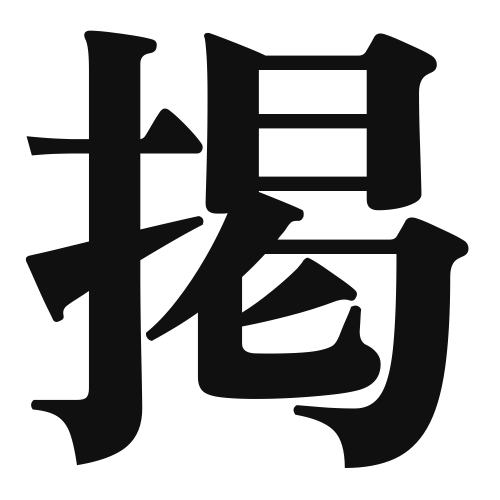1. Overview of Meaning
The kanji “掲” (ke) means “to display” or “to post.” It is often used in contexts where something is being shown or announced publicly, such as notices or advertisements.
2. Formation and Radical
Formation of the Kanji: The kanji “掲” is a compound character (会意文字) that combines elements to convey its meaning. It consists of the radical “手” (hand) which indicates an action, and “圭” (a type of jade), which adds a sense of value or importance to what is being displayed.
Radical: The radical of “掲” is “手” (hand), which is commonly associated with actions involving the hands, such as holding or displaying something.
3. Examples of Usage
Common Words and Phrases: Some frequently used words that include “掲” are:
- 掲示 (けいじ, keiji) – notice, bulletin
- 掲示板 (けいじばん, keijiban) – bulletin board
Example Sentences in Daily Conversation:
- この掲示板に新しいお知らせが掲示されています。
- (This bulletin board has new announcements displayed.)
4. Synonyms and Antonyms
Similar Kanji: A similar kanji is “表示” (ひょうじ, hyouji), which also means “to display” but is often used in more technical contexts, such as digital displays.
Opposite Kanji: An antonym could be “隠す” (かくす, kakusu), which means “to hide,” representing the opposite action of displaying something.
5. Cultural and Historical Background
Relation to Japanese Culture: The concept of displaying information is significant in Japanese culture, especially in public spaces where community announcements are made. The use of “掲” reflects the importance of communication and information sharing.
Proverbs and Idioms: While there may not be specific proverbs that directly use “掲,” the act of displaying information is often tied to the idea of transparency and openness in communication, which is valued in Japanese society.
